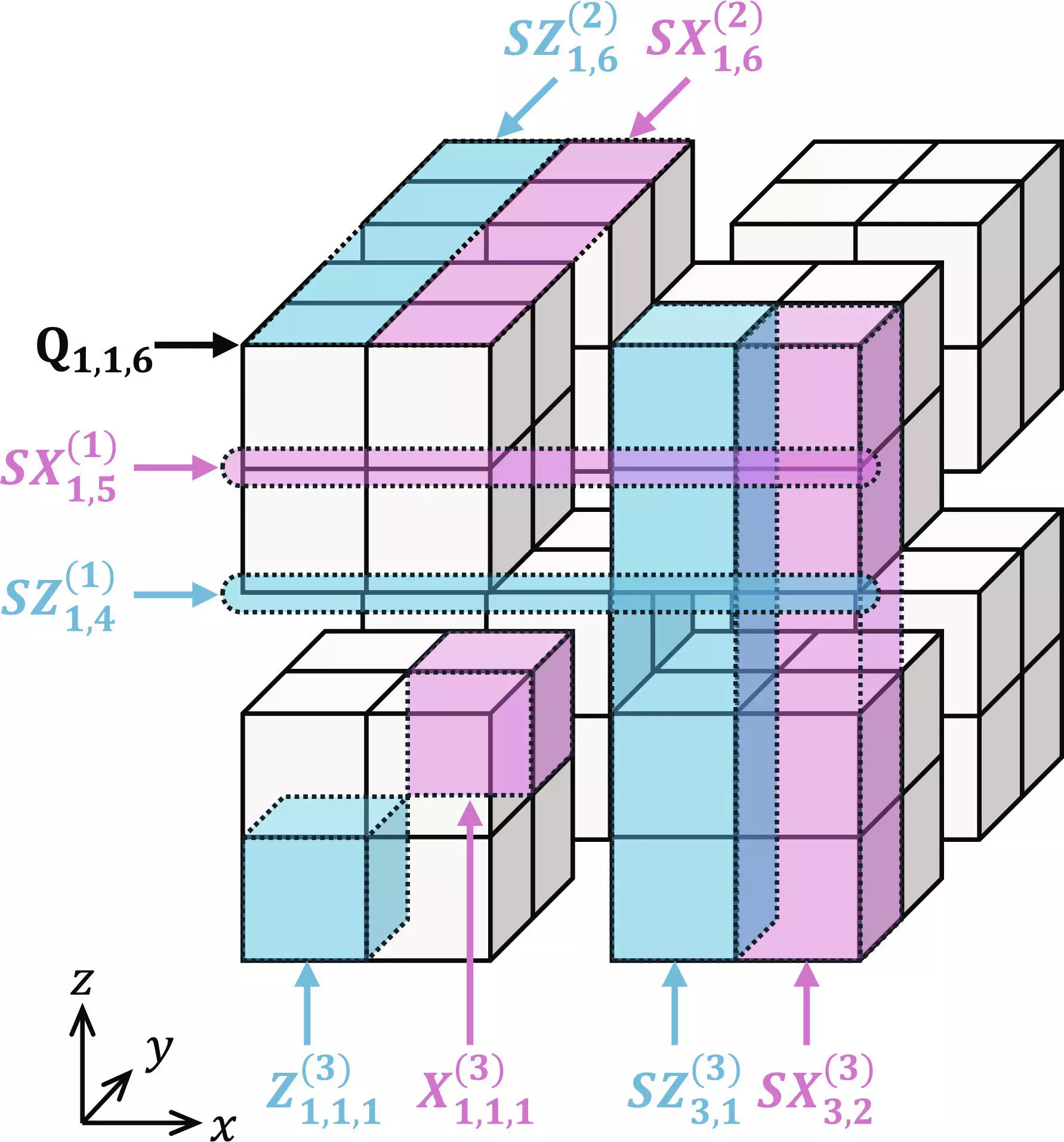Quantum computing has long been seen as the next frontier in computing technology, offering the potential to revolutionize fields from cryptography to drug discovery. However, one of the biggest obstacles to realizing the full potential of quantum computers is error correction. In a recent publication in Science Advances, Hayato Goto from the RIKEN Center for Quantum Computing in Japan has proposed a groundbreaking new approach to quantum error correction using “many-hypercube codes.”
Traditional quantum error correction methods have been based on encoding a single logical qubit onto many entangled physical qubits, leading to scalability issues and resource overheads. High-rate quantum codes, such as quantum low-density parity-check codes, have been explored as a solution, but they often suffer from inefficiencies due to sequential gate setups. This has spurred the need for more efficient error correction methods.
Goto’s innovative approach involves the use of “many-hypercube codes,” which allow for highly parallel error corrections and efficient logical gate setups. By visualizing logical qubits as forming a mathematical hypercube, Goto has created a novel error correction method that promises to significantly improve the performance of fault-tolerant quantum computing systems.
What sets Goto’s many-hypercube codes apart is their elegant mathematical and geometric structure. Unlike most high-rate quantum codes, which have complex structures, the many-hypercube codes offer a visually appealing and highly structured approach to error correction. This structured approach is not only aesthetically pleasing but also highly effective in improving system performance.
Central to Goto’s approach is the development of a dedicated decoder that utilizes level-by-level minimum distance decoding. This technique allows for high-performance error correction and logical gate setups in parallel, mirroring the efficiency of parallel processing in classical computers. Goto aptly describes this as “high-performance fault tolerant computing,” highlighting the system’s ability to rival traditional low-rate codes in performance.
One of the most impressive feats of Goto’s many-hypercube codes is their remarkable encoding rate of up to 30%, the highest reported rate among codes used for fault-tolerant quantum computing. Despite this high rate, the performance of the codes remains comparable to that of conventional low-rate codes, demonstrating the effectiveness of Goto’s innovative error correction approach.
The future of quantum computing looks brighter with the introduction of Goto’s many-hypercube codes. By combining elegant mathematical structures with efficient error correction techniques, Goto has opened up new possibilities for achieving fault-tolerant quantum computing systems. With further development and refinement, these codes could pave the way for a new era of high-performance quantum computing.


Leave a Reply